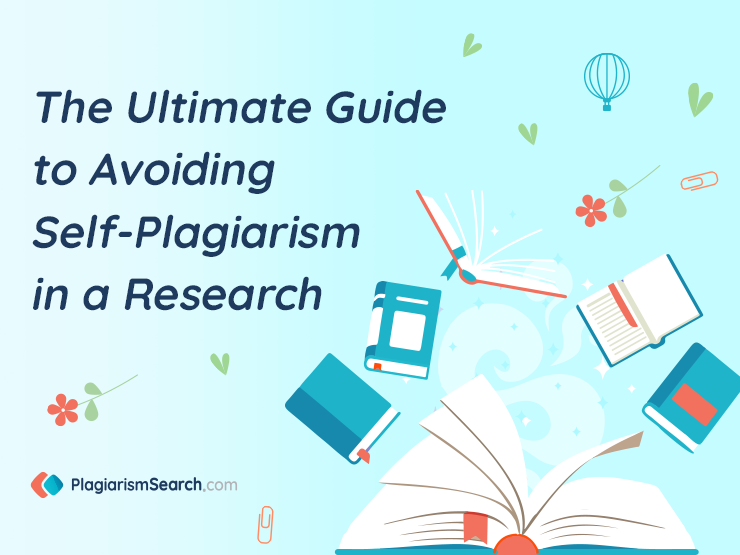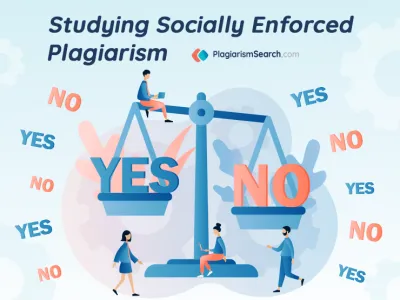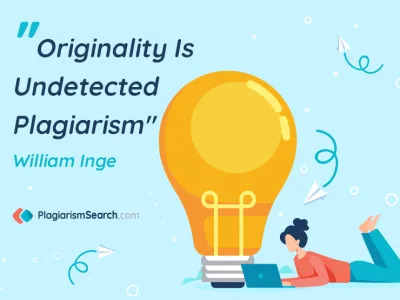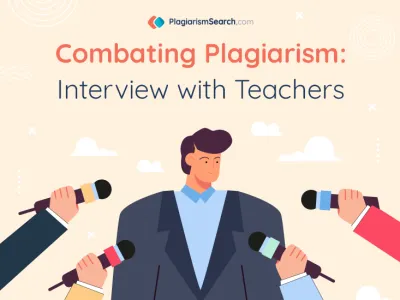
The Ultimate Guide to Avoiding Self-Plagiarism in a Research
A common definition of self-plagiarism is reuse or recycling of one’s own ideas and words from the texts published or submitted earlier. Is it a genuine theft? Can you define this act as a violation? Does it create any issues for you if you use your own thoughts and texts? You are simply revisiting your previous publication, aren’t you? Still, it not a brand new idea and it is essential to get to know how to avoid self plagiarism in your writing.
What Is Plagiarism and How to Avoid It in Materials for Journals?
It is clear that the nature of writing determines the legality of using the same materials again. For instance, fiction has absolutely different standards from those in journalism or law. One of the topics for heated debates in the field of research is whether self-plagiarism can be acceptable. In the area of scientific publishing, there are a lot of cases of rejecting articles because of overlapping ideas in the articles.
- Self-plagiarism is destructive for research
The key idea of research is preserving the integrity of new knowledge. Scientific discoveries are important and new findings should help researchers gain understanding of the world around. If you include information without any referencing, it means that the discoveries and conclusions are new. If old facts and data of previous research are published again, science will lose the trust of people.
- Copyright determines who the ideas belong to
The author owns all the rights to the ideas, but the journal owns the rights to its publications. Thus, it is not acceptable to reuse any materials without the permission of the journal, even if the article is written by you.
- Journals may block the publication of the article with self-plagiarism
Screening of all materials for publication is an obligatory procedure in the research journals. You have to know how to fix plagiarism as it will definitely be flagged in the process of plagiarism detection. Your writing may be rejected or at least there will be a delay to figure out whether there is stealing of ideas in the submitted materials.
Self plagiarism in college and universities is a problem that still requires new solutions as even some of the professors are not sure about how the issue can be handled. This gap in knowledge makes a set of resources and guidelines on duplicative research publications and ethics of text recycling from Cary Moskovitz, an academic of Duke University, really valuable. Looking for available guidelines, he realized that there was lack of resources on the topic. Therefore, his Text Recycling Research Project was supposed to address the problem of investigation and student self-plagiarism and collect resources for studying the subject.
Outputs of Text Recycling Research Project
Cary Moskovitz concluded that plagiarism is always present in the research body and at least three sentences in every article are copied. There are numerous legal and ethical issues related to self-plagiarism, and editors of journals ask all authors to do rephrasing. Is self plagiarism a form of cheating? Intentionally or not, authors violate copyright when their language is recycled from their previous publications. Collecting the ideas from publishers, the researcher studied various nuances to create a set of guidelines for everybody.
A Guide for Researchers
Is copying your own work plagiarism? This is the question researchers keep asking themselves. Actually, it is and there are four types of possible text recycling:
- Generative Recycling
Researchers take the previous work and make a new contribution into a new publication. Thus, an old work is changed into a new one with expansion upon the materials used before. For example, a scientist may perform a new experiment and include some parts of the previous ones.
- Developmental Recycling
Some researchers take previous documents they prepared but they were not published before. It is reuse of some conference speeches without previous publications.
- Duplicative Publication
Researchers ask a question ‘Can I plagiarize myself, making a publication of similar content to the same audience?’ For instance, such a case can be publishing the same ideas from a research in several journals without any cross references.
- Adaptive Publication
If a researcher adapts a previous article for publication in a new journal or textbook, it is an example of adaptive plagiarism in publications.
Which of the recycling types are generally acceptable? Developmental Recycling is not that bad, while Duplicative Publication causes a lot of problems.
Thus, there should be specific standards and guidance for all the involved parties: researchers, publishers, and editors. Their cooperation is a must as all of them have their own concerns over the self-plagiarism issues. Is copying your own work plagiarism? The answer to this question is clear, but there should be particular provisions on all types and corresponding legal actions for each of them.
How Can Plagiarism Be Avoided?
It is actually easy to take action and avoid both plagiarism and self-plagiarism in your writing. For every researcher and even a student, it should be a taboo to plagiarize. Which measures can be taken?
- Every source should be cited
Citations are necessary in your writing and taking an idea from someone’s research or your own previous paper, you should identify the source and provide all details, including the title and date of publication.
- Insert quotations
It is an easy method, but it is a really efficient way of demonstrating that the words you write in your new article are either not your own or your own, previously used. A quote cannot be without citing as the readers need to know the source of every piece of information.
- Do paraphrasing
Can you plagiarize your own work if you do paraphrasing of your own ideas used in your articles? It will be rewriting with new wording, but incorrect approaches to this can cause issues with plagiarism. The boundary between original text and plagiarized sections is very vague when they are paraphrased. The ideas remain the same, but the wording is altered. The most important thing is to provide proper referencing and indicate the source, even if the text is unrecognizable.
- Make sure that the presented perspective is unique
Explore some new aspects of the content to use. Try to contribute new aspects into previous research and keep in mind that your own perspective is framed in a unique manner.
- Use a plagiarism checker which uses the database of your own writing
A typical tool for plagiarism detection can catch the issues of copying Internet sources. A really good tool will let you find the answer now only to the question ‘Do you use online sources?” but also to another one ‘Can you plagiarize your own work?’ Scanning the texts for copied content with highlighting the sections of major concern is of great help for every student and researcher.
You believe that the answer to the question ‘Can you plagiarize yourself? is ‘For sure, no!’ Actually, it is possible and you have to take all possible measures to figure out how to avoid this to be sure that your research is absolutely original.



